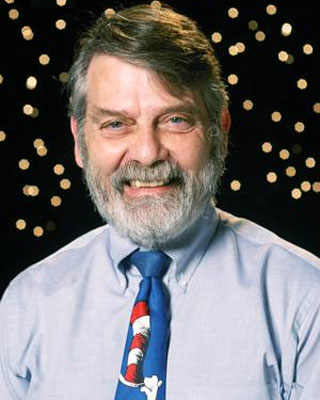Home > On-Demand Archives > Workshops >
Polyphase Analysis and Synthesis Filter banks: capabilities and implementation
Fredric J Harris - Watch Now - Duration: 03:01:25

Two papers related to this workshop and made available by fred harris:
- Performance Options of a High Performance Receiver Filter Bank Channelizer
- Analysis Channelizers with Even and Odd Indexed Bin Centers
Polyphase Analysis and Synthesis filter banks, a very important segment of the multirate signal processing community, are the most incredible signal processing algorithms. Your first reaction to your understanding them is: “I’ll be darned!” Your second reaction is: “I can hardly wait to tell all my friends about this!” Do you know about these things?
Let’s start with the analysis filter bank which has a dual structure called the synthesis filter bank. Each does the opposite of the other. The analysis channelizer processes a sampled data input signal spanning a wide frequency band containing many contiguous narrow bandwidth channels. The result of that processing is a set of narrow bandwidth signals translated from their original centers to baseband and low-pass filtered to their channel bandwidths to separate them from their neighbors and further down sampled to a rate commensurate with their reduced bandwidths. This process for a single channel is called a digital down converter (DDC). The remarkable property of the analysis channelizer is the cost of M (say 100) channels is only about the cost of 5 channels. Amazingly the process occurs in a completely different manner and order of what you would imagine! Rather than down convert, filter, and reduce sample rate, the sample rate is reduced on the way into the filter bank and the processing is performed at the reduced output rate instead at the high input rate.
If we were a fly on the wall we might overhear this conversation between a potential buyer and the salesperson in the polyphase analysis filter bank store. The customer asks “What will a single channel DDC cost me?” The salesperson answers “It will cost you $10”. The customer then asks “What will 10 equal BW channels of DDCs cost me?” The salesperson answers “it will cost you $100 but if you are interested, we have a special this week; we have a 100 channel DDC for only $50. For that price, you can compute all 100 channels, throw away 90 of them and still have your 10 channels at a reduced price!” Which option do you think the customer will buy? Have we caught your attention?
There is surely another store in town that sells synthesis filter banks. These banks up sample many baseband narrowband signals a higher sample rate and translates the baseband signals to selected center frequencies to form a composite broadband spectrum. These are digital up converters (DUCs). The two filter banks are duals of each other; one uses aliasing caused by down sampling to translate all the band center signals to baseband and a clever trick to separate the aliases while the other uses aliasing caused by up-sampling to translate all the baseband signals to selected band centers and the same trick to perform the dual task of separating the up-sampled aliased spectral bands.
We will review the signal processing sequence of the M-path analysis and synthesis channelizers. We will then go through all the steps to implement the MATLAB realizations of the same and illustrate performance and methods of verifying its operation. This is a process you have to do three or four times till it finally clicks. I have former students contact me and ask “Remind me why we did this thing at this point in the script?” Reset time!
Using the serpentine shift you can control the oversimplify rate at the output of the channeliser. Is this limited to rational oversampling only, or can you also implement an arbitrary oversampling ratio this way?
Hello Fred,
Thank you so much for your excellent talks! I thoroughly enjoyed them! Thank goodness the sessions were recorded so I can revisit the concepts that I didn't understand.
I have a question:
Is it possible to have an M-path analysis channelizer where each channel has equal bandwidth and decimated output sample rate, but there is significant spectral overlap between channels? For example, the center frequency of one channel appears within the pass band of another channel.
Thanks,
Ryan
Ryn, I have done that many times. I will send a piece of software I have written for a ten path filter with three options, no operla of adjacent channels, 3dB overlap level and 20% overlap of adjacent channels. The second pair require M-to-2 down sampling. We do this in surveillance receivers where we don''t know the channel center frequencies... the channel overlap optionmeans even if the received channel is at the midpoint bewteen channel centers, it winds up in two receiver channels and is not split by the receiver channel responses.
Hi fred,
Wanted to follow-up to see if you've had a chance to upload the overlapping channel software that you mentioned above. I did not seem to find it in the latest zip file linked on the left side of this webpage.
Thanks!
Ryan
Hi fred. That is wonderful news! Looking forward to your example code!
In the left column, under "Files Provided by the Speaker(s)", you should now be able to download a zip file with a few articles and code snippets provided by fred.
Leonard,
I'll chase down and resolve the confusion. I know I had submitted two sets of matlab script with copies of papers.
best regrds, fred
Stephane, the code posted is the same as the other lecture : Polyphase Wide-Bandwidth Filters Implemented with Order of Magnitude Workload Reduction: Capabilities and Implementation. The code presented in this video is different than the file below.
Thanks!
Are the slides and code from this workshop going to be made available somewhere?
Adam,
Stephane is very good at doing that and will be doing so!
fred
yes, stephane will be doing that!
fred
Great, thank you fred.
you are very welcome
adam,
the slide will be available shortly. They do contain the matlb script but I can make the script available separtely.
fred













wessel,
The serpetine shift can form arbitrary ratio resampling ratios. The rational ratios are the simplest, We have implemented other ratios by zero packing the data which causes the filter set to require multiple sets of weights linked to the state machine that tracks the origin of the initial input data shift. I had a patent on that many years ago based on a design I did for Bell labs. It was never used and I let the patent expire.